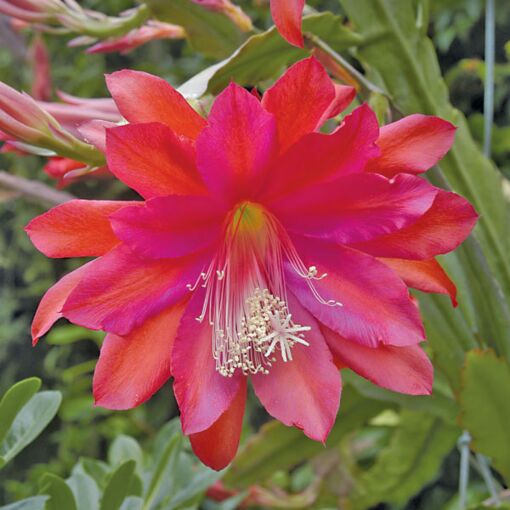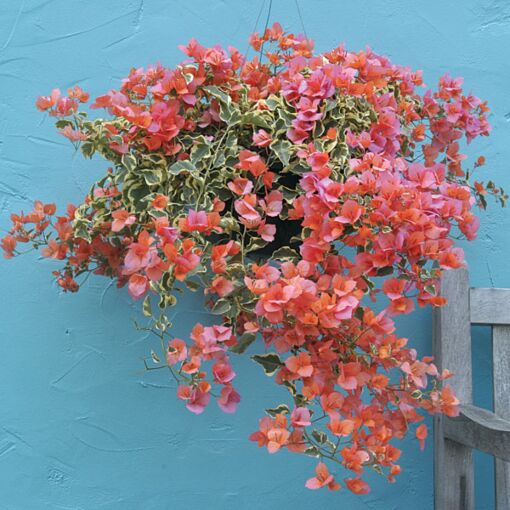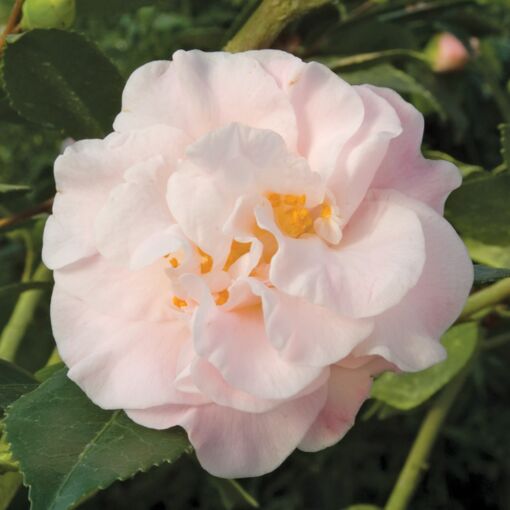
Winter Stress Welcome
By Laurelynn Martin and Byron Martin
 |
|
Orchid Cactus ‘Conway’s Giant’
|
 |
|
Bougainvillea 'Orange Ice' |
 |
|
Camellia ‘High Fragrance’ |
People and plants have a lot in common when it comes to stress: certain varieties of plants and certain types of people actually thrive under stress. In fact, the plant varieties listed below need to be stressed to perform at their best.
Giving a plant winter stress means a restriction of water, and an exposure to cool or cold night temperatures. Generally this means temperatures dropping below 60˚F and staying above 32˚ on a consistent basis.
Although short day length is often part of the stress, it isn’t always a necessary ingredient. Many plants that thrive under stressful conditions are simply responding to the seasonal changes in their native environment. For example some plants originate from areas that have a dry, cool season. Epiphylum, aporophyllum, and true cacti also known as “spiny cacti” respond to total restriction of water and cool nights for stimulating flowers. Clivia is another plant that needs these conditions. One advantage to the gardener is that under the stress of dryness and night chill the plants can be grown under lower light conditions. The low light of a north window, the dim light of a garage window (as long as the garage stays above freezing) or even a basement window is sufficient for light requirements.
Generally, the dry period is for several months and although the plants may defoliate and shrivel up, they need to be under this stress. Sunny window space is usually at a premium and by moving plants into low light areas other plants that need the sun now have adequate growing space. Clerodendrum thomsoniae “Glory Bower” is another herbaceous vine that needs this treatment. “Glory Bower” needs to completely defoliate, although an occasional drink is necessary.
In late winter or early spring, once the stems are bare, increase the light and begin watering. It will wake up with new growth. This is a great time to prune if needed. If you don’t stress “Glory Bower” and it stays vegetative, then it will not flower as well for the next season. Or it may not flower at all. Treat with neglect through the winter and then in the springtime buds will appear on the growing tips of all the new growth.
Bougainvillea is another variety that goes through defoliation. If Bougainvilleas are successfully stressed, then they will experience some of their heaviest flowering in the next season. Coolness and dryness throughout the winter months stimulate this response. Once bare of leaves, Bougainvilleas can also be moved to diminished light areas. In late winter, as the days lengthen, they begin to grow, often producing flower buds before any leaves.
Lastly, Camellias need to be grown cold and given no fertilizer during the cool months, simply water. Warm nights are the major cause of bud drop in Camellias. Welcoming winter stress into your container garden will bring great joy to your springtime collection of plants.

